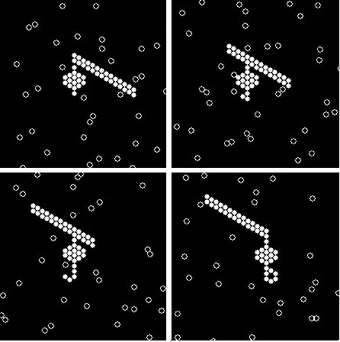DigiHive

DigiHive is an abstract environment for artificial life modeling.[1] The environment simulates a large number of entities called particles (represented by hexagonal tiles) on a two-dimensional continuous space with periodic boundary conditions. Particles move and collide according to rules of a simplified classical mechanics (including the conservation of energy and the conservation of momentum laws). After a collision the involved particles can join together forming a complex of particles. A complex consists of at least two particles; the types and locations of the forming particles define the structure of the complex.
The most important feature of the environment is that the structure of each complex is interpreted as a program written in a declarative Prolog-like language. Therefore, complexes are capable of recognizing and manipulating other complexes (or individual particles) around them. A single program is able to perform only very simple actions ‒ like creating and removing bonds between nearby particles, but in a highly selective manner.
There is no single program that directs other programs. The global behaviour is always an emergent result of simple local interactions.
See also
References
- ↑ Sienkiewicz R., Jędruch W., 2007, An artificial environment for Simulation of emergent Behaviour, Adaptive and Natural Computing Algorithms: 8th International Conference, ICANNGA 2007, Warsaw, Poland, April 11–14, 2007, Proceedings, Part I, LNCS 4431, pp. 386-393